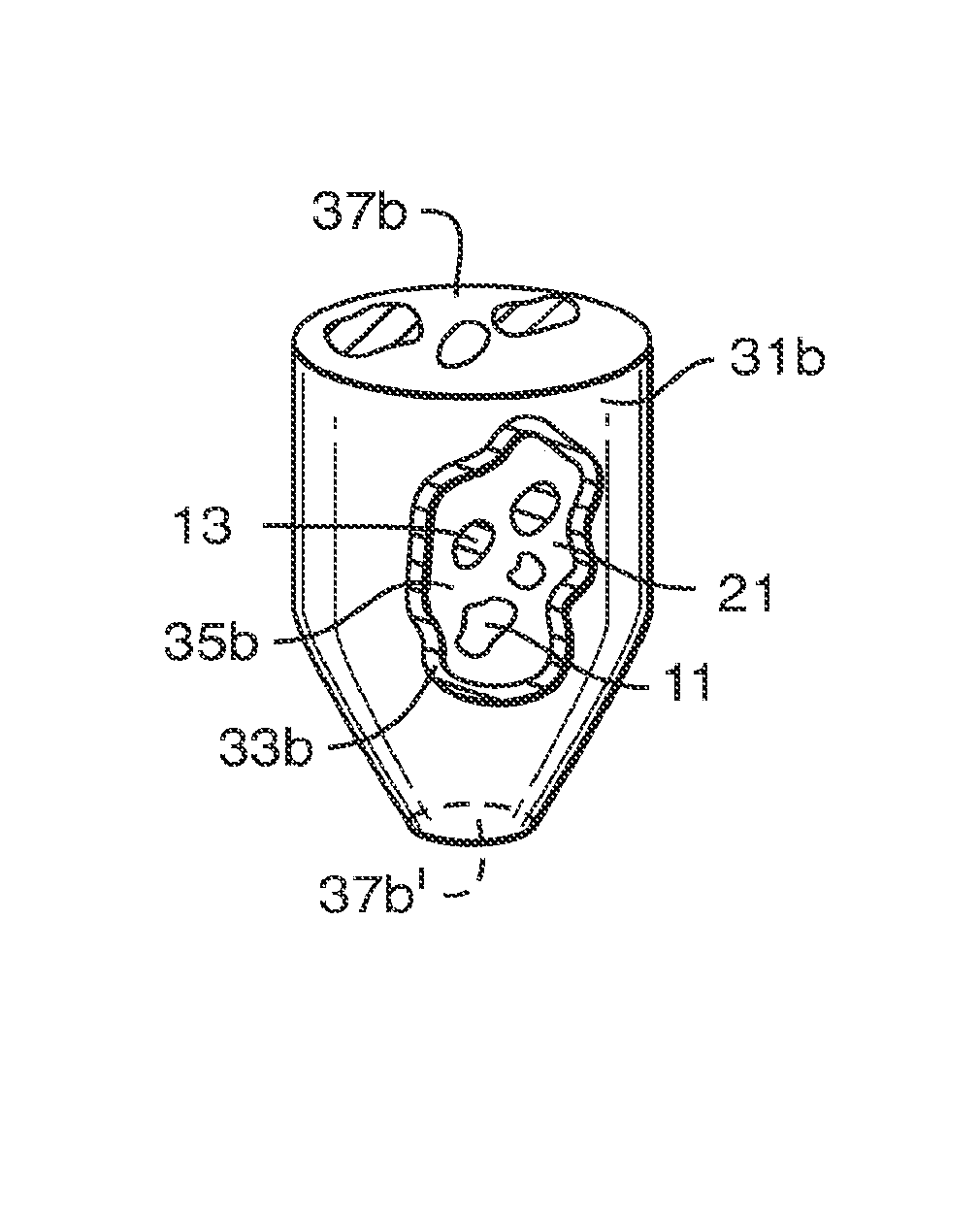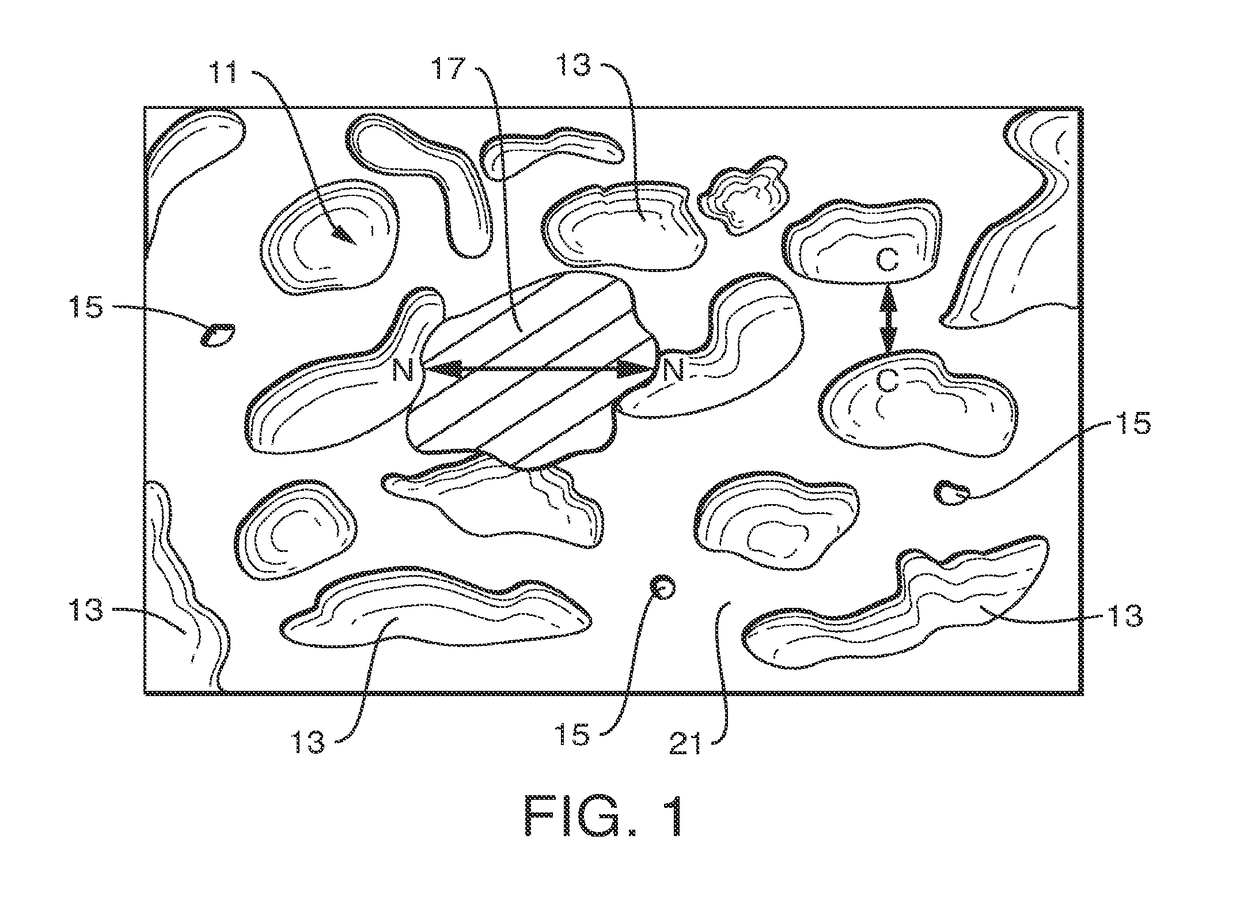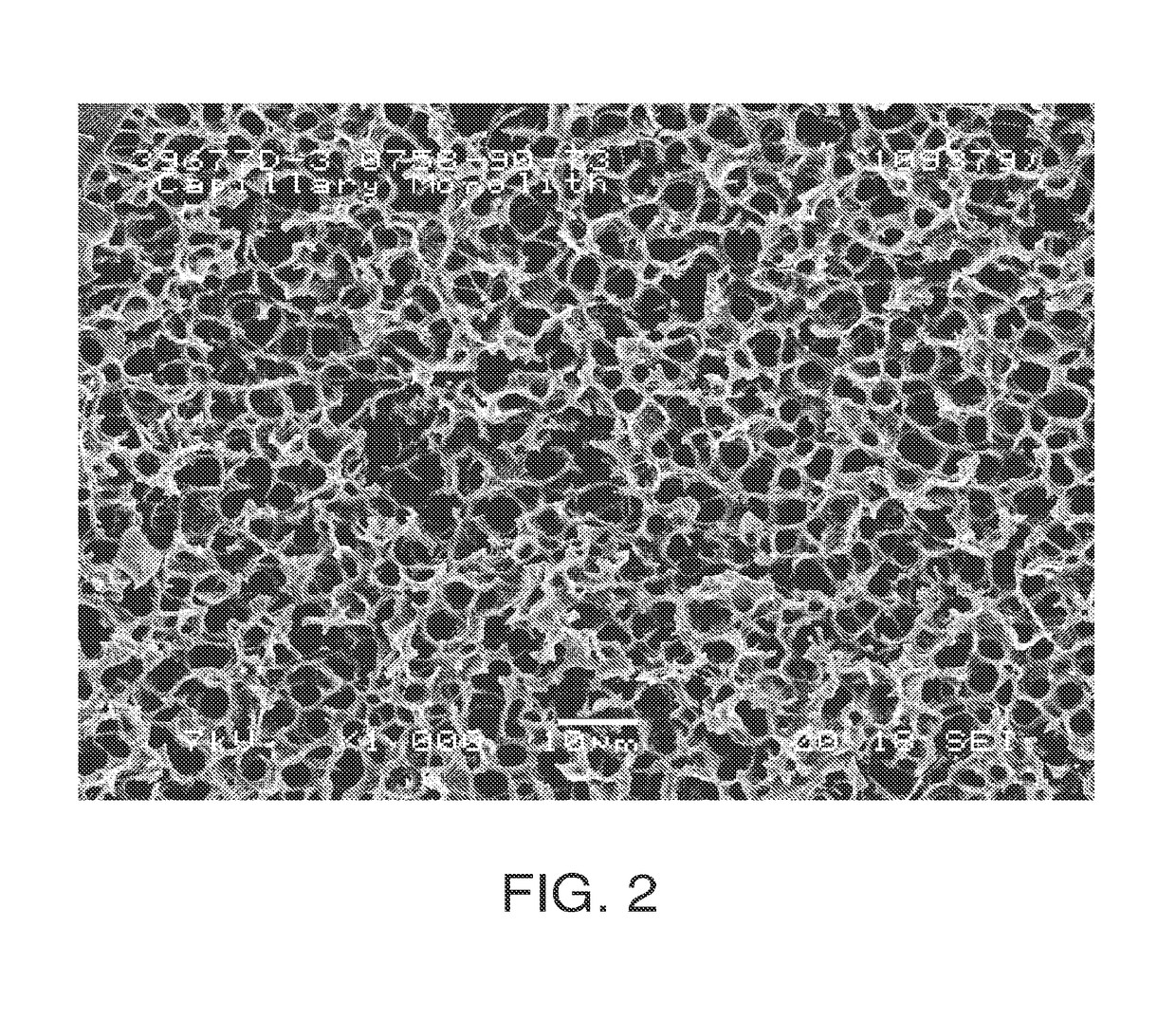Porous material and devices for performing separations, filtrations, and catalysis and EK pumps, and methods of making and using the same
a technology of porous materials and devices, applied in the field of porous materials, can solve the problems of poor pump performance and failure, unpredictable or incomplete separation of porous monolith materials, and inability to perform filtration or catalysis,
- Summary
- Abstract
- Description
- Claims
- Application Information
AI Technical Summary
Problems solved by technology
Method used
Image
Examples
example 1
Pretreatment of Capillary
[0151]The surface silanols provide linkers for monolith to adhere onto the capillary wall during polymerization process. This pretreatment process is designed to activate the capillary wall surface by increasing the surface silanol density. Untreated capillaries often showed satisfactory performance, but the treated capillaries yield more consistent results.
[0152]A polyimide coated fused silica capillary (Polymicro Technologies, Phoenix, Ariz., P / N TSP200350) is conditioned with base and acid. The capillary is rinsed by flowing acetone at approximately 50 μL / min for about 2 hours or more, followed by flowing 1M NaOH at approximately 50 μL / min for about 2 hours. The capillary is then sealed to retain the 1M NaOH. It is heated in an oven at approximately 80° C. for about 2 hours and cooled to room temperature. After removing the seals, the capillary is rinsed with 1M HCl at approximately 50 μL / min for about 2 hours. The capillary is finally rinsed with deioniz...
example 2
Monolith Formation
[0153]In order to prevent any adverse temperature gradient during hydrolysis, all reagents were kept cold at the hydrolysis temperature (0˜4° C.). A mixture of 5.50 mL methyltrimethoxysilane (MTMS), 2.85 mL dimethyldimethoxysilane (DMDMS) and 3.60 mL methanol (MeOH) is stirred vigorously at 0˜4° C. After about 5 minutes stirring (or until the mixture becomes homogeneous), 2.60 mL of cold 1 M nitric acid (HNO3) is added to the mixture to initiate the hydrolysis. After 2 minutes of stirred hydrolysis, 1.65 mL of cold 1,2-bis(trimethoxysilyl)ethane (BTME) is added into the hydrolysis mixture. After 3 minutes (total of 5 minutes stirred hydrolysis reaction), the mixture is filled into capillary tubes of 200 μm id and about 20 cm length (typically pretreated as outlined above) while the tubes are kept at low temperature. The mixture is typically pushed into capillary tubes by applying inert gas pressure, but other filling methods can be utilized as well. The ends of cap...
example 3
Monolith Formation
[0154]In an alternative preparation, hybrid monoliths can be prepared using tetramethoxysilane (TMOS) instead of BTME. The conditions for monolith formation were generally similar to the conditions of Example 2, except as noted herein.
[0155]A mixture of 1.00 mL DMDMS and 2.80 mL methanol are vigorously stirred in an ice bath. Addition of 2.60 mL cold 1M nitric acid initiates the hydrolysis. After 2 minutes of stirring, 8.50 mL cold MTMS is added. After another 2 minutes, 0.50 mL cold TMOS is added, and stirred for 2 more minutes (total 6 minutes of hydrolysis). All hydrolysis process was kept at low temperature of 0˜4° C. The hydrolysis solution is filled into capillary tubes and cured, in similar methods described above.
PUM
| Property | Measurement | Unit |
|---|---|---|
| shrinkage | aaaaa | aaaaa |
| mean cross-sectional diameter | aaaaa | aaaaa |
| mean cross-sectional diameter | aaaaa | aaaaa |
Abstract
Description
Claims
Application Information
 Login to view more
Login to view more - R&D Engineer
- R&D Manager
- IP Professional
- Industry Leading Data Capabilities
- Powerful AI technology
- Patent DNA Extraction
Browse by: Latest US Patents, China's latest patents, Technical Efficacy Thesaurus, Application Domain, Technology Topic.
© 2024 PatSnap. All rights reserved.Legal|Privacy policy|Modern Slavery Act Transparency Statement|Sitemap



